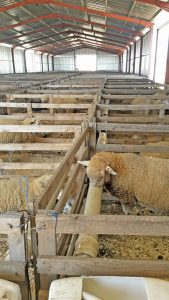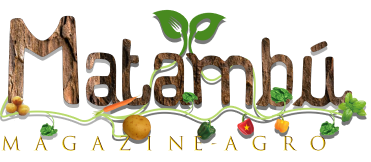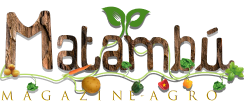[ad_1]
Lambing pens supply a multitude of advantages for farmers. Regina Harmse, who breeds Ile de France sheep in Mpumalanga, spoke to Annelie Coleman in regards to the methods during which these pens can add worth to any kind of sheep manufacturing concern.
Photo: Supplied
For Regina Harmse, who runs the RCH Ile de France Stud on the farm Uitgezocht close to Ermelo, enhancing the standard of her animals is a non-negotiable. With roughly 1 000 Ile de France ewes cut up 50/50 between stud and business herds, she has to run an intensive, hands-on operation so as to flip a revenue.
And for this to occur, sustaining the best attainable lambing and weaning percentages is important. For this cause, lambing pens are a key a part of her operation.
Common misconceptions about lambing pens are that a farmer can use them to flip dangerous moms into higher ones, or that the system breeds the mothering instincts out of ewes.
Harmse says the reality is that a lambing pen system is a useful instrument for rising a flock and growing income, because it allows a producer to increase weaning percentages and decrease lamb mortality charges.
And whereas it gained’t kind out downside animals, a lambing pen system permits for the better choice of genetics for higher mothering means. She provides that it’s the farmer’s job, in any case, to discover these ewes that present poor maternal means and to cull them accordingly.
Close statement
A lambing pen system requires a quick lambing interval (a most of 35 days) to mitigate animal feed and labour prices.
According to Harmse, the vast majority of lamb deaths happen within the first three days after beginning. Small lambs are supreme prey for predators such because the black-backed jackal and caracal and, within the case of many communal farmers, feral canines.
High concentrations of ewes in a single camp, the variety of lambs born per day, and environmental situations additionally add to lamb mortality charges. The extra ewes in a camp and the upper the variety of lambs born per day, the better the necessity for a detailed and extra intricate administration construction. The final goal of a well-functioning lambing system, due to this fact, is to hold be aware of each ewe and lamb throughout lambing season.
“The Ile de France breed is thought for its means to produce a number of births, which requires elevated administration and management. This is critical for the long-term sustainability of the operation, as a number of births enhance replica and development charges considerably.
“Lambing pens make it possible for the farmer to monitor individual lambs and ewes consistently and regularly. One very important aspect of pens is that they enable a lamb to suckle within three hours of its birth, which is crucial for the bonding process between the ewe and the lamb,” she says.
Colostrum is the primary type of milk produced by mammals instantly following the beginning of their younger. It accommodates antibodies that defend the new child animal towards illness and an infection, in addition to immune cells and development elements that assist activate the younger animal’s immune system and guarantee well being, development and vitality. The sooner a lamb ingests colostrum, the higher.
Through common monitoring of the penned ewes, any issues they may have, resembling blocked teats, could be noticed early sufficient to stop everlasting harm. Blocked teats are infamous for inflicting a marked drop in milk manufacturing and, consequently, a spike in lamb mortality.
Teat well being is important for the survival of each ewes and lambs. Bacteria that enter the teat following suckling may cause infections resembling mastitis. Keeping ewes in pens makes the well timed detection of ailments and different illnesses attainable.
Pen specs
Harmse says the common lambing pen needs to be no smaller than 1,5m x 1,5m x 0,9m. A pen of this dimension will accommodate a ewe and her offspring comfortably. The precise dimension of the pen, nonetheless, will rely on the breed of sheep and whether or not the ewe is carrying a singleton or a number of lambs.
Food and water containers needs to be hooked up to the wall of the pen to unlock ground house for the animals.

The alternative of constructing materials is up to the farmer; metal pens, for instance, are stronger, however dearer than these constituted of pallet wooden. However, the principle goal stays the identical: to stop the lambs from escaping.
In the case of pens with earthen or cement flooring, Harmse recommends that they be lined with sawdust or hay, as they’ll turn out to be chilly and moist. Wooden slatted flooring may also be used.
“In my case, the pens are roofed, they usually have earthen flooring which might be lined with sawdust. An earthen ground is right for correct drainage. However, the pens should be cleaned and the sawdust changed usually to hold the ground floor dry.
“It’s additionally advisable to disinfect the pens with lime earlier than placing within the sawdust or hay. The predominant level is that the pens should be designed in order that the animals are protected against the weather and supplied with shade.
“Flying and biting insects should also be controlled to protect the animals against bacteria and disease.”
Animal well being
The umbilical twine is a potential downside with lambs and desires to be monitored and handled if required. The open navel can function a level of entry for micro organism and a direct route to the liver. It is due to this fact essential to completely disinfect a new child lamb’s umbilical twine with iodine, and hold the pen hygienic.
With lambs born in pens, this complete course of is much simpler.
Vaccination is essential to the well being of the ewe (and her lamb) throughout gestation, all through parturition, and when she is lactating. Pregnancy suppresses the extent of immunity within the ewe, which reduces the safety that she and her unborn lamb have from debilitating and lethal ailments.
During this era and all through lambing, the ewe will likely be protected against the ailments that she has been vaccinated towards.
When the ewe is vaccinated at two to 4 weeks earlier than lambing, the maternal antibodies within the type of colostrum are produced within the udder. When the colostrum is consumed by the lamb inside the first 48 hours of beginning, these maternal antibodies safeguard the animal from the corresponding ailments for six to 10 weeks. This is important to defend the lamb from loss of life and sickness till its personal immune system turns into totally useful.
For the pre-lamb vaccine to be efficient, it should be administered appropriately, as per label directions. Harmse advises farmers to use Multivax-P to stop pasteurellosis, pulpy kidney, tetanus, malignant oedema and blackquarter, amongst different ailments.
She additionally recommends Onderstepoort Biological Products’ vaccination towards blue udder. No dwell vaccines needs to be used throughout gestation, as they might lead to excessive fever, adopted by abortions.
However, it’s important that ewes be dewormed about a week earlier than lambing. Trace components are indispensable to making certain excessive lambing charges and weaner weights, and the demand for manganese, zinc, copper and selenium particularly spikes markedly throughout being pregnant.
These components play a very important function in foetal growth (particularly throughout the last levels of being pregnant) and, finally, the survival fee of lambs, due to the elevated ranges of such components supplied by the ewe’s milk.
Body situation and well-being
It is apparent that in-lamb ewes needs to be stored in the absolute best situation. However, it doesn’t make sense to begin increase the situation of lean ewes over the last six weeks of gestation, as there’s a good likelihood that this may end in lambing issues.
“What usually happens is that the foetus grows too big for safe lambing,” says Harmse.
“The supreme is to provide the ewe with a ration of between 450g and 500g daily from the onset of the lambing season, and to enhance this by 250g to 300g each seven days.
“The daily ration for single-lamb ewes should not exceed 1,5kg, and multiple-lamb ewes should not receive more than 2kg daily before lambing. Bypass protein should be provided during late pregnancy to improve mothering ability, increase growth rate, enhance the quality of the colostrum, and prevent lambing problems.”
For penned ewes, Harmse recommends a feed combination of 375kg milled lucerne, 350kg
milled maize, 150kg Voermol Maxiwol Concentrate, 50kg Voermol Procon 33 and 80kg Voermol Molasses Meal provided every day at 1,5kg to 2,5kg for every ewe.
“Because we synchronise the breeding animals, we will decide the ewes that had been mated throughout the first and second mating cycles. As quickly as the primary ewe lambs, she and the remainder of her group are penned, and it’s right here that the opposite lambs are born.
“It’s particularly important to pen young ewes so they can get used to the environment, as they [tend to get more] stressed than mature ewes.”
Change of surroundings
The ewes and their lambs are moved to pasture as quickly as they’ve bonded and the younger are suckling effectively; this often takes three to 4 days within the case of singletons, and three to 5 days with a number of lambs.
The penned animals are launched in small teams and steadily launched into the bigger flocks so the lambs can get used to greater concentrations of animals, and to ensure they’ll recognise their moms effectively sufficient to stick with them.
It is advisable not to hold lactating ewes in teams of greater than 100 animals. In the case of singletons, the ewes and lambs are initially stored in teams of 10 ewes for between 5 and 7 days, then moved to teams of 20 ewes for the following 5 to seven days. From there, they’re shifted to teams of 40 ewes for yet one more five- to seven-day interval.
With a number of lambs, the ewes are stored in teams of 5, 10, 20, or 35 to 40. According to Harmse, there ought to by no means be greater than 200 to 250 lambs and ewes in a camp, whatever the lambing system.
Management and management
Developing and operating a lambing pen system is dearer than most different lambing programs, and this contains animal feed bills. It can also be extra labour-intensive. However, the elevated weaning charges imply a good return on funding.
Whether or not it’s profitable relies on correct management and sound administration.
“The implementation of stringent biosecurity measures is important due to the numerous enhance in instances of cryptosporidiosis. This illness has wreaked havoc within the native livestock trade, and one measure that may be taken to stop it isn’t to permit any outdoors individual to enter the pens.
“Without a strict biosecurity system, it’s virtually impossible to run a sustainable livestock production concern in South Africa,” says Harmse.
[ad_2]
Source link










